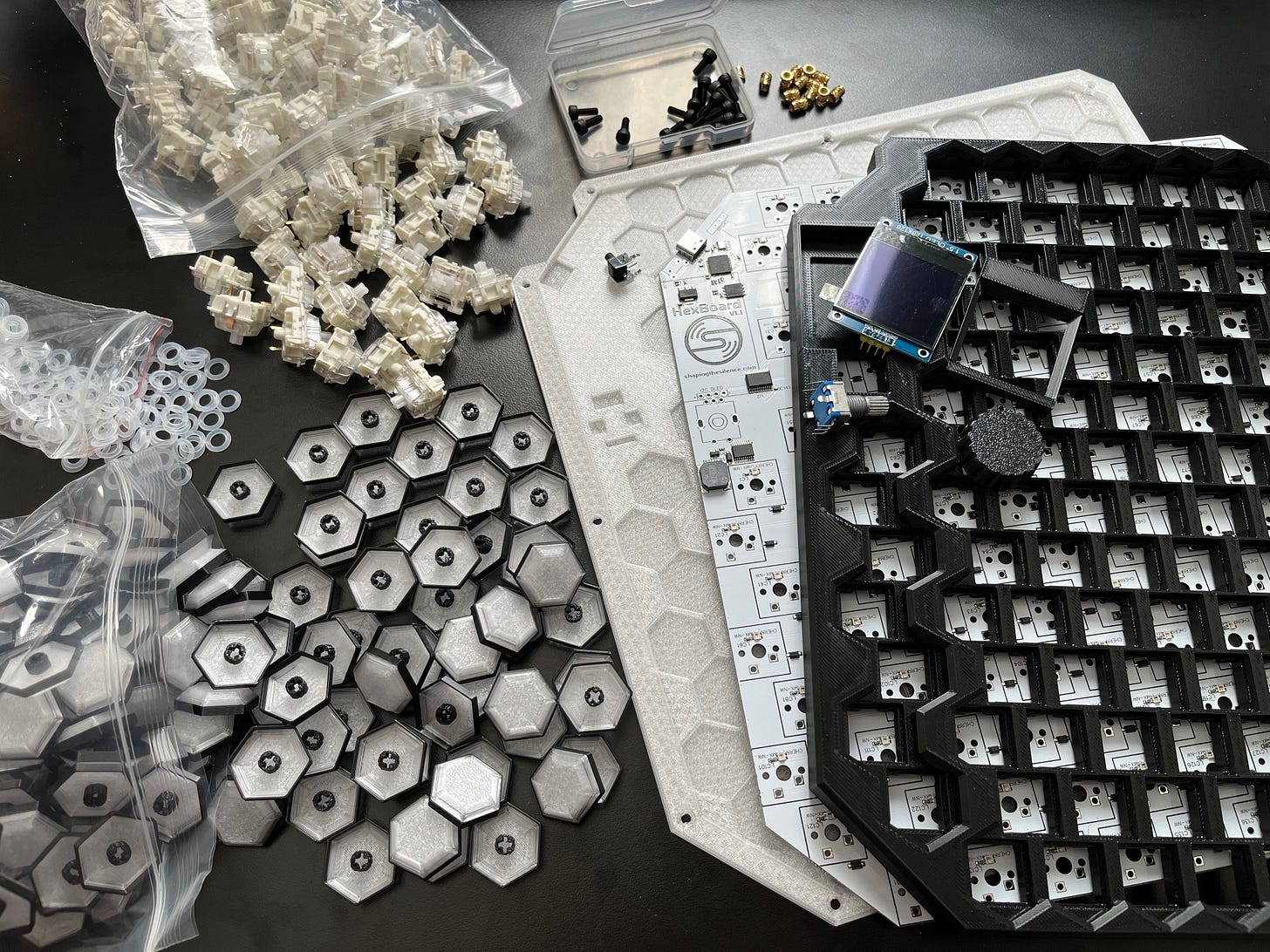HexBoard Hardware and Firmware Updates
What I've been building the past few months...
In this post I’ll give an overview of the development process that led to the HexBoard I now I have available and share a bit about new hardware that I’m working on for my next project.
HexBoard Development Overview:
2013 - 2014

I started dabbling in MIDI instrument design and made something based on the Axis-49. I even made a video about it! It worked fairly well for years, but as I used it, I found more and more design flaws I wanted to fix…
09/2021

I threw together a quick prototype to try to replace my old instrument. It works okay, but it’s somewhat unreliable and boring. I decided pretty quickly I needed something better if I wanted to use this regularly. I spent the next few months working in the theoretical realm of what I wanted to do…
06/2022 - 05/2023
I eventually realized I just needed to start building instead of waiting for every last piece to fall into place. That was a good move.

I first built this thinking it would be just for myself, but after some encouragement from friends (and a surprising online response to a video of it), I decided to go all-in on making this a product.
Additional dev units are built, feedback is collected from beta testers, and new hardware is designed based on that feedback.

05/18/2023

HexBoard is launched. Initial firmware includes 3 layouts, rainbow lighting, key/scale highlighting, transpose, pitch bend, brightness control, and buzzer. Case is printed in PLA+ with the keys printed in PETG.
06/05/2023
Firmware update 0.2.0 is released which adds mod-wheel capability and refactors a bunch of code to clean things up.
07/08/2023
Firmware update 0.3.0 is released which adds scale-lock mode, adds more scales to the menu, and speeds up the display performance considerably!
07/25/2023
Firmware update 0.4.0 is released which adds in lighting animations. This is my favorite update by far and it was also the most challenging to figure out how to program. I also posted a video of it to demonstrate the main feature set.
10/31/2023
Bought a new 3D printer which makes it possible for me to print the whole frame in PETG as well as the keys. All HexBoards from this point forward will be printed in PETG which should increase toughness and heat resistance.
11/13/2023
Firmware update 0.5.0 is released which adds an arpeggiator to the built-in buzzer, adds a new “orbit” animation, adds a new layout which includes all 128 midi notes, adds initial microtonal support, improves color algorithm, and gives you tools to create your own layouts. It also adds a bunch of bugs due to my hastiness in releasing it. Fixed here and finally bug free (I hope) here.
12/09/2023
Kits are now available! Now that I’ve simplified the assembly process, I’m ready to send out kits to those who want to save some money and get the satisfaction of building the HexBoards themselves. I made a short overview video of the build process.
Where next?
As I see it, onward and upward. I have a few features I intend to add to the HexBoard including built-in layout generation and different color pallets to choose from.
Beyond this, I’m working on the next generation of HexBoard. It’s all in the theory realm as I study datasheets and decided what sort of hardware I need to make an upgraded version possible, but it’s in the works. The next version will not replace the current HexBoard and will likely cost a good deal more just based on what I’ve seen so far.
If you have any suggestions for hardware you’d like to see on a more expensive HexBoard or firmware ideas for the current model, please leave them in the comments. I’d love to hear your ideas!
In closing.
That’s all I have to share at this point. Thanks for following my work and I can’t wait till I have more to share with you!



